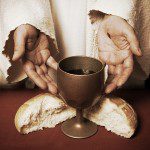
Fifteen years ago, I worked for the Farm Labor Organizing Committee (FLOC), a mostly Latino immigrant labor union. We were part of a coalition of immigrant rights organizations that developed an immigration reform proposal in consultation with Congressman Luis Gutierrez called the DREAM Act which had a goal of normalizing the immigration status of the undocumented immigrants living in the US as well as creating a sustainable system for the future. It’s never been passed, but it’s the basis for calling undocumented immigrant youth “dreamers.”
A big part of the DREAM Act would involve addressing a huge gap in our immigration system that is the cause of most of the cases of undocumented immigration. We need a temporary worker visa that allows workers to operate as independent contractors, which most undocumented immigrants are already doing. They are the most tenacious entrepreneurs in our economy.
Right now, the only visa available to blue collar immigrant workers is the H-2. H-2 visas are mostly granted for seasonal workers, usually in agriculture. US farmers apply for a quantity of H-2 visas to hire workers from abroad. The workers’ visa is contingent upon their employment with the employer who applied for the visa. This creates an indentured servitude condition for workers under this visa program since they can’t quit their jobs if living or work conditions are unacceptable. A tremendous amount of abuse has resulted in the agricultural industry.
It’s not just a potentially abusive situation. It’s completely impractical. When workers migrate, they need to have the flexibility to switch between jobs. What happens if the climate causes the bell pepper harvest to be a bust but the Christmas tree farms are doing okay? Migrant workers are naturally going to leave the bell pepper fields for the tree farms, but if their H-2 is tied to the bell pepper farmer, they become “illegal” when they do that, even though the bell pepper farmer has no way to pay them for doing work that is nonexistent.
What would happen if instead of having a visa tied to a particular employer, temporary workers could enter the country with the expectation that they would be freelancing as independent contractors, which is what inevitably happens anyway? Right now, many undocumented immigrants have to check in on a regular basis with the local ICE office, knowing every time that they might get deported. A temporary worker visa could be contingent upon a regular check-in with ICE. Those who check in and can demonstrate gainful employment could be granted visa renewals. Those who don’t check in are the ones who would potentially have something to hide and thus make themselves candidates for deportation.
One of the major issues with immigration right now is the coyote system by which undocumented immigrants are smuggled in. They have to pay thousands of dollars for each border crossing under this system. Often these thousands of dollars are “paid” in the form of debt to a contractor crew chief who is able to hold the debt over them and exploit their labor for years into the future. The same networks that smuggle people are also smuggling drugs. The more we fortify the border, the more valuable we make the business of the coyotes and drug smugglers.
We’re not going to be able to cut them off with a wall. They mostly use tunnels already anyway. We’re just going to make their work more sophisticated and more profitable. Nobody will be able to scramble through the desert on their own anymore. They’ll have to pay the coyote who has a connection inside the Border Patrol. The most money is going to be made by corrupt ICE officials who give the coyotes their windows. The best way to eliminate the power of coyotes is to create a legal, above-board means for unconnected blue collar independent contractors to come and go between the US and our southern neighbors according to the ebb and flow of jobs the way it works in the European Union.
Immigrants would save thousands of dollars if there were a legal way to cross the border and work in the US, even if they were charged a fee of hundreds of dollars to subsidize the overhead for ICE supervision of a temporary worker visa. If crossing the border didn’t cost a fortune, it would completely disincentivize the permanent migration of workers’ families to the US. You can live way better in Mexico for way cheaper than the US. I know one undocumented immigrant family who lives in a trailer park in the US but owns a 4000 square foot home in Mexico. The only reason to bring your whole family up to the US to live in a trailer park is if you can’t go back and forth across the border without paying thousands of dollars according to the ebb and flow of the temporary labor market.
It’s unsustainable to have a system that incentivizes perpetual permanent migration to the US. If instead our system incentivized migratory work, then workers could come to the US seasonally and return home to Latin America every year. They would split their income between the US and their home countries, which could bring our economies to equilibrium so that perhaps one day in the distant future, US workers would be just as likely to migrate south as Latin American workers would be to migrate north.
I know I’m not an economics expert. I may have some of my facts confused since it’s been so many years since I was giving regular presentations on this topic. But it’s ridiculous that we can’t have a rational, practical conversation about this topic that simply looks at the causes of human migratory patterns and seeks to incentivize the most optimal social behavior. Instead, we’ve been completely distracted by fear and pseudo-moralism. My hope is that after the political Chernobyl that Donald Trump leaves behind, whatever is left of the Republican Party will be much more capable of having pragmatic, problem-solving conversations about complicated issues like immigration. Maybe we’ll get this done in 2021.














